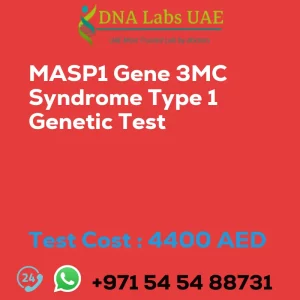ITGA3 Gene Interstitial lung disease nephrotic syndrome and epidermolysis bullosa congenital Genetic Test
Test Name: ITGA3 Gene Interstitial lung disease nephrotic syndrome and epidermolysis bullosa congenital Genetic Test
Components: Osteology, Dermatology, Immunology Disorders
Price: 4400.0 AED
Sample Condition: Blood or Extracted DNA or One drop Blood on FTA Card
Report Delivery: 3 to 4 Weeks
Method: NGS Technology
Test type: Genetics
Doctor: Dermatologist
Test Department: Genetics
Pre Test Information: Clinical History of Patient who is going for ITGA3 Gene Interstitial lung disease, nephrotic syndrome, and epidermolysis bullosa, congenital NGS Genetic DNA Test. A Genetic Counselling session to draw a pedigree chart of family members affected with ITGA3 Gene Interstitial lung disease, nephrotic syndrome, and epidermolysis bullosa, congenital NGS Genetic DNA Test gene ITGA3
Test Details: The ITGA3 gene is a gene that provides instructions for making a protein called integrin alpha-3. This protein is found on the surface of cells and plays a role in cell adhesion and cell signaling. Interstitial lung disease (ILD) is a group of lung disorders characterized by inflammation and scarring of the lung tissue. Nephrotic syndrome is a kidney disorder that causes the body to excrete too much protein in the urine. Epidermolysis bullosa, congenital (also known as junctional epidermolysis bullosa) is a rare genetic disorder that affects the skin and mucous membranes, causing blistering and erosion of the skin.
A next-generation sequencing (NGS) genetic test is a type of genetic test that uses advanced sequencing technologies to examine multiple genes at once. In the case of the ITGA3 gene, an NGS genetic test can be used to identify any genetic variations or mutations in the gene that may be associated with the development of interstitial lung disease, nephrotic syndrome, or epidermolysis bullosa, congenital.
By identifying these genetic variations, healthcare professionals can better understand the underlying cause of these conditions and provide more targeted and personalized treatment options for affected individuals. Additionally, genetic testing can also help in genetic counseling and family planning by providing information about the risk of these conditions in future generations.
| Test Name | ITGA3 Gene Interstitial lung disease nephrotic syndrome and epidermolysis bullosa congenital Genetic Test |
|---|---|
| Components | |
| Price | 4400.0 AED |
| Sample Condition | Blood or Extracted DNA or One drop Blood on FTA Card |
| Report Delivery | 3 to 4 Weeks |
| Method | NGS Technology |
| Test type | Osteology Dermatology Immunology Disorders |
| Doctor | Dermatologist |
| Test Department: | Genetics |
| Pre Test Information | Clinical History of Patient who is going for ITGA3 Gene Interstitial lung disease, nephrotic syndrome, and epidermolysis bullosa, congenital NGS Genetic DNA Test. A Genetic Counselling session to draw a pedigree chart of family members affected with ITGA3 Gene Interstitial lung disease, nephrotic syndrome, and epidermolysis bullosa, congenital NGS Genetic DNA Test gene ITGA3 |
| Test Details |
The ITGA3 gene is a gene that provides instructions for making a protein called integrin alpha-3. This protein is found on the surface of cells and plays a role in cell adhesion and cell signaling. Interstitial lung disease (ILD) is a group of lung disorders characterized by inflammation and scarring of the lung tissue. Nephrotic syndrome is a kidney disorder that causes the body to excrete too much protein in the urine. Epidermolysis bullosa, congenital (also known as junctional epidermolysis bullosa) is a rare genetic disorder that affects the skin and mucous membranes, causing blistering and erosion of the skin. A next-generation sequencing (NGS) genetic test is a type of genetic test that uses advanced sequencing technologies to examine multiple genes at once. In the case of the ITGA3 gene, an NGS genetic test can be used to identify any genetic variations or mutations in the gene that may be associated with the development of interstitial lung disease, nephrotic syndrome, or epidermolysis bullosa, congenital. By identifying these genetic variations, healthcare professionals can better understand the underlying cause of these conditions and provide more targeted and personalized treatment options for affected individuals. Additionally, genetic testing can also help in genetic counseling and family planning by providing information about the risk of these conditions in future generations. |








